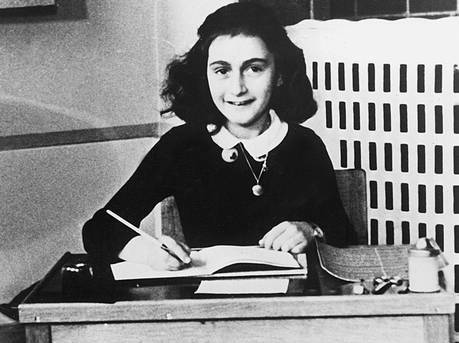“… I want to publish a book entitled Het Achterhuis after the war. Whether I shall succeed or not, I cannot say, but my diary will be a great help.”
These are the words taken from one of the entries of the diary of the then fifteen-year-old German-born Jewish girl who went into hiding with her family during the Second World War in order to survive persecution at the hands of the Nazis, only to be discovered twenty-five months later by the Gestapo from the building at Prinsengracht, Amsterdam, where they sought refuge.
Anne Frank wrote these words in her diary on Thursday, May 11, 1944 – a few months before her whereabouts along with those of seven other adherers of the Jewish faith, who went into hiding in the “Secret Annexe” – were made known to the Nazi Secret State Police by one of the employees of the building where they hid themselves, in return to a petty sum of money.
Anne was the younger daughter of Otto Frank, who arranged the hideout for his family – comprising of him, his wife and his two daughters: Margot and Anne – with the help of some of his non-Jewish friends in the very building he worked so that the four of them might avoid getting caught and being deported by the Nazis back to Germany as they had fled the country soon after anti-Semitism rose significantly after Hitler came to power.
Young Anne took her diary –gifted to her on her thirteenth birthday (June 12, 1942) and referred by her as ‘Kitty’– with her to the hiding place (which she called as the ‘Secret Annexe’) as she would go on sharing her experiences, her feelings, her observations, her perceptions, her liking and disliking with Kitty during the entire period in which the whereabouts of the Franks remained unknown. The Franks were later joined by the Van Daans family and then by Alfred Dussel in the Secret Annexe whereas some of Otto Frank’s most loyal friends were responsible for providing these eight individuals with food, books, updates about the war and other necessities during their hiding period.
On August 4, 1944, the whereabouts of these eight Jews were discovered by the Nazis who took them to Westerbork detention camp, located in northeastern Netherlands. However, almost a month later, they were taken to Auschwitz – the infamous concentration camp in Poland. Anne’s mother died at Auschwitz as a result of starvation whereas she and Margot were taken to the Bergen-Belsen concentration camp in northern Germany. Both sisters died there in the early months of 1945. Otto Frank proved to be the lone survivor of the family after the Russians liberated Auschwitz the same year.
Anne’s diary was discovered from the Secret Annexe and was returned to her father, who had an edited version of it published in 1947 under the title: Het Achterhuis, which was later translated in English as: ‘The Diary of a Young Girl’. The diary received acclamation from around the globe and has been translated into more than sixty languages whereas a number of plays, dramas and other literary works have also been based on it.
Her diary is a beautiful collection of a number of emotions and feelings combined, including: love, pain, anger, suffering, delight, coming of age, sorrow, thankfulness and more. She mentions her misunderstandings with her mother, writes about her gradual tilt towards the only son of the Van Daans, describes her longing for outdoors and friends and shares her thoughts towards the millions who share the same faith as hers but not the good luck that has prevented her from a horrible treatment.
Anne Frank became a symbol of courage and determination all around the world. The thoughts she has expressed in her diary might seem to be childish but they project the mindset of a brave individual who refused to give up hope despite being aware of the fact that the odds of survival were not entirely in her favor. Her words tell the story of a young girl who remained ambitious and lively whilst she underwent the battle for her life and death. Her experiences make the challenges we face in our daily lives seem utterly insignificant.
Though concerns regarding the authenticity of the content shall continue being raised, The Diary of a Young Girl gives one the perception of living life under constant fear – a situation in which one has to make compromises over everything in order to live another day; a struggle to maintain a calm state of mind despite the sword of uncertainty hanging above the head. There aren’t many who are able to hold themselves together when afflicted with calamity – but Anne did, and she also persuades others to have faith as well.
Her diary gives one an idea about the horrendous atrocities committed by the people clinging to a particular mentality against a selected portion of the population and about the extent the former would go to in order to rid the latter off their territory. Merely pondering about the treatment given to that very portion of the occupied population may evoke sentiments of pain and sufferings in any being with a functioning heart.
Tyranny, in any shape or form, against any set of population, must be condemned. Anne gave a voice to the millions who might have remained unheard. She along with many others like her who have the guts to look at their oppressors right in the eye, will continue to convince the oppressed to never let hope fade away. Through her diary, Anne Frank will forever remain alive in the hearts of millions and she will continue inspiring generations to come.






